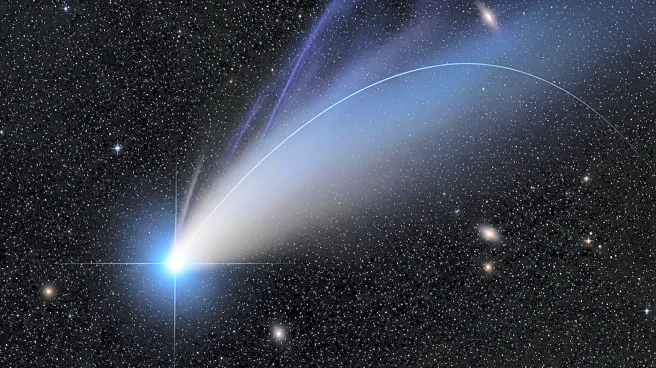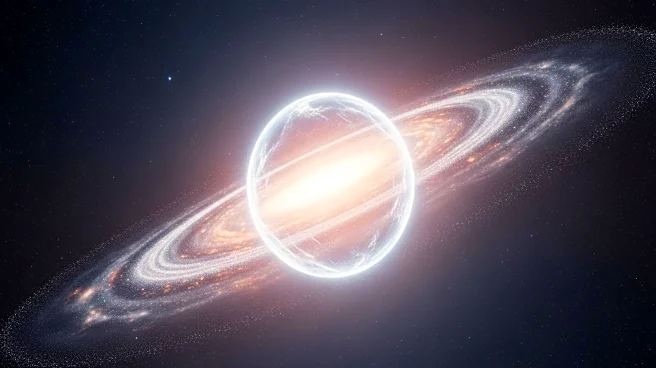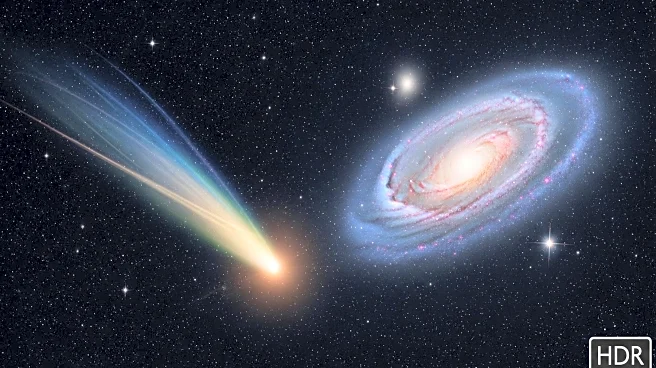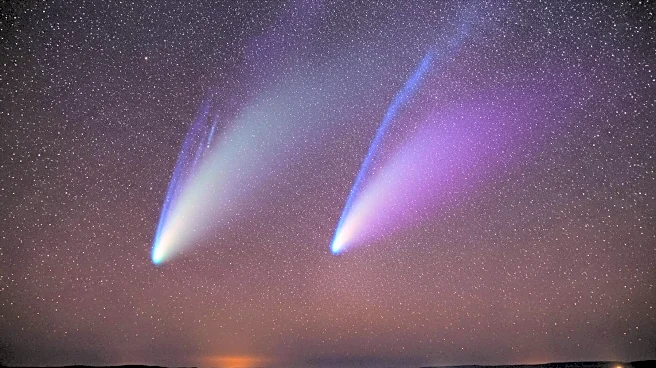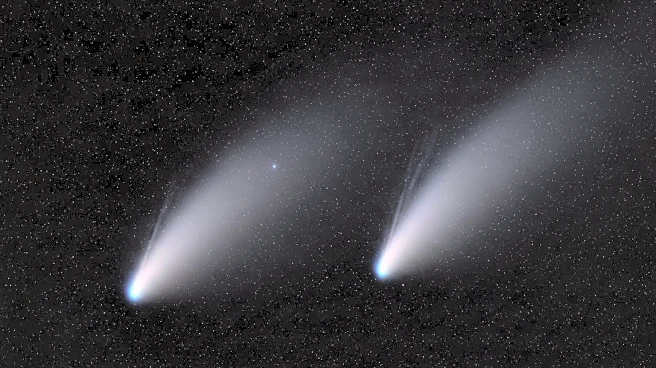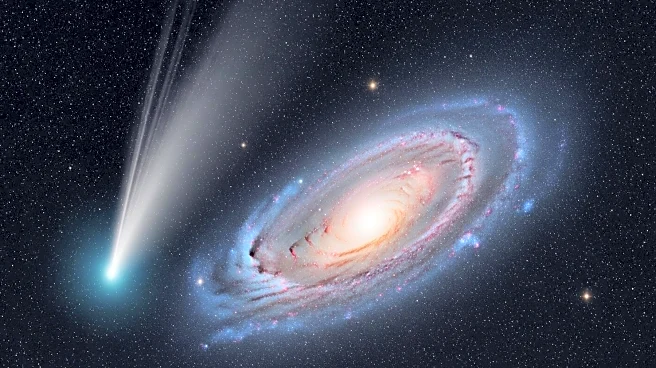What's Happening?
Comet Lemmon, designated as C/2025 A6, is currently approaching Earth and will make its closest approach on October 21, coinciding with the New Moon. This celestial event will make the comet appear brightest on the morning of October 21, weather permitting. Observers are advised to look for the comet in the constellation Ursa Major, near the star Tania Australis. The comet rises around 1:30 a.m. local time, but it is recommended to wait a few hours for it to rise higher for better visibility. Comet Lemmon was discovered on January 3, 2025, as part of the Mount Lemmon Survey in Arizona. Its current orbital period is approximately 1,350 years, which will be reduced to 1,150 years after its closest approach to the Sun on November 8.
Why It's Important?
The approach of Comet Lemmon presents a unique opportunity for astronomers and enthusiasts to observe a celestial event that occurs infrequently. The comet's visibility during the New Moon enhances the viewing experience, as the absence of moonlight allows for clearer observation. This event is significant for scientific research, providing insights into the comet's composition and behavior. Additionally, it offers educational opportunities for the public to engage with astronomy and understand the dynamics of celestial bodies. The reduction in the comet's orbital period due to gravitational interactions with the Sun highlights the dynamic nature of our solar system.
What's Next?
Observers are encouraged to monitor Comet Lemmon several days before and after its closest approach to Earth to account for potential erratic behavior. The comet will move into different constellations, including Canes Venatici and Boötes, providing varied viewing opportunities. Scientists and astronomers will continue to study the comet's trajectory and characteristics, contributing to the broader understanding of cometary science. The next opportunity to observe Comet Lemmon will be around the year 3175, making this event a rare chance for current generations.
Beyond the Headlines
The observation of Comet Lemmon underscores the importance of ongoing astronomical surveys and research in expanding our knowledge of the universe. The Mount Lemmon Survey's discovery of the comet highlights the role of technology and collaboration in advancing space exploration. This event also serves as a reminder of the interconnectedness of celestial bodies and the impact of gravitational forces on their paths. The public's interest in such events can foster greater appreciation for science and inspire future generations to pursue careers in astronomy and related fields.

